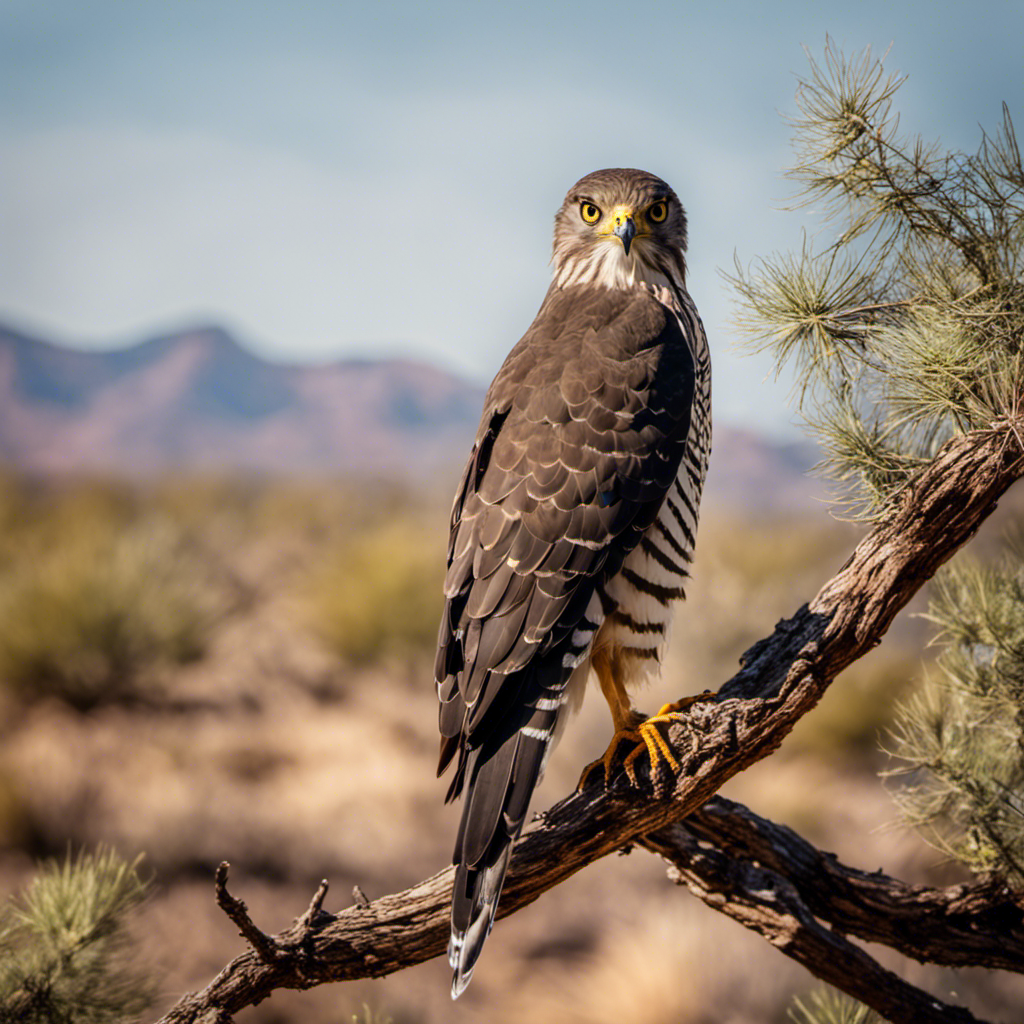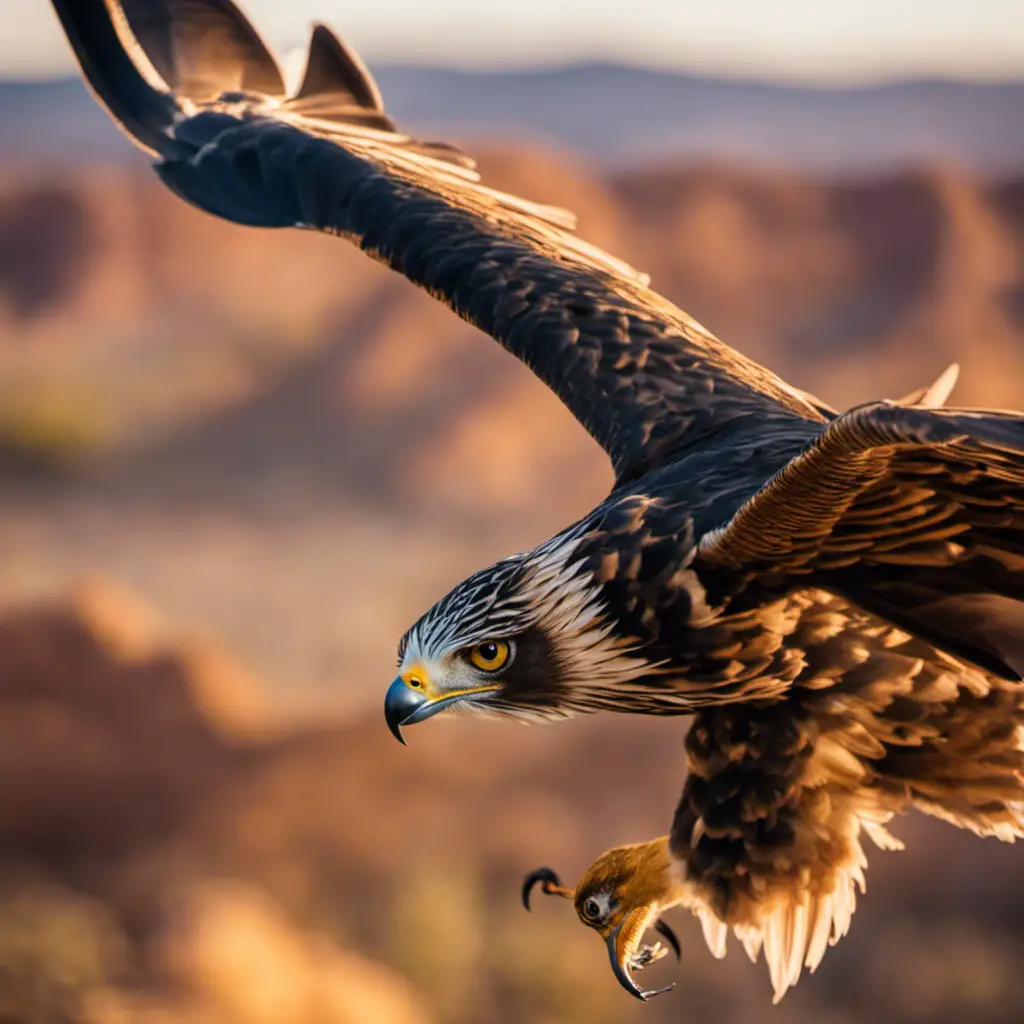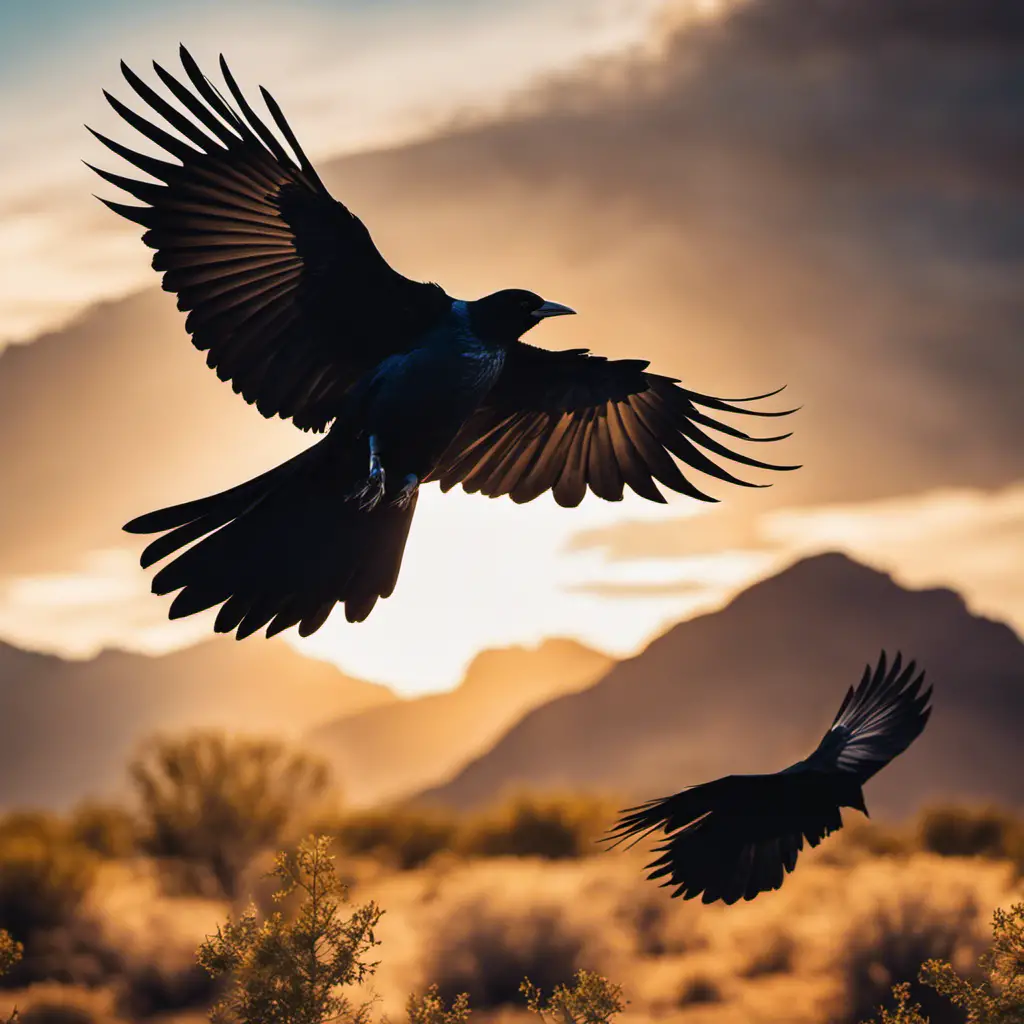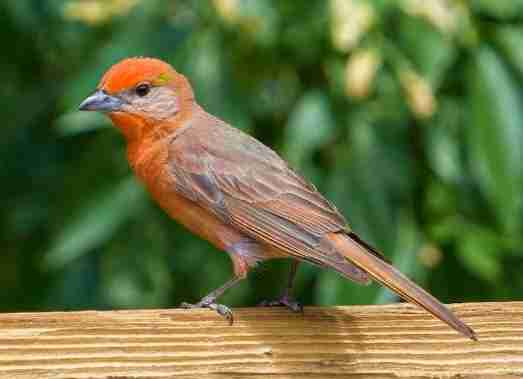Welcome to our comprehensive guide on the diverse array of birds of prey found in the captivating landscapes of Arizona.
This article aims to enlighten and engage readers with scientific, detailed, and informative content tailored to those seeking a deeper understanding of these majestic creatures.
From the iconic Red-tailed Hawk to the elusive Peregrine Falcon, join us as we explore the fascinating world of Arizona’s avian predators, showcasing their unique characteristics and remarkable adaptations.
Key Takeaways
- Arizona is home to a variety of hawks, including the Red-tailed Hawk, Sharp-shinned Hawk, Cooper’s Hawk, and Northern Goshawk.
- Other raptors found in Arizona include the Harris’s Hawk, Swainson’s Hawk, Rough-legged Hawk, Common Black Hawk, Burrowing Owl, California Condor, and Ospreys.
- Falcons found in Arizona include the Prairie Falcon, Crested Caracara, Ferruginous Hawk, Broad-Winged Hawk, and Northern Harrier.
- Eagles found in Arizona include the Golden Eagle and Bald Eagle. Additionally, falcons and owls such as the American Kestrel, Merlin, Peregrine Falcon, and Great Horned Owl can also be found in the state.
Red-tailed Hawk

The red-tailed hawk is a common sight in the Arizona skies, known for its distinctive red tail feathers. These magnificent birds have specific habitat preferences, typically nesting in tall trees or on cliffs, and are found throughout a variety of habitats, including forests, grasslands, and deserts.
Red-tailed hawks are adaptable and can be found in both rural and urban areas. When it comes to hunting, these birds are highly skilled predators. They primarily feed on small mammals, such as rodents, rabbits, and squirrels, but they are also known to eat birds, reptiles, and even carrion.
Red-tailed hawks use their keen eyesight and sharp talons to locate and catch their prey, often soaring high in the sky before swooping down to make a swift and precise attack.
Sharp-shinned Hawk

Observing the sharp-shinned hawk’s agile flight patterns and hunting techniques, one can appreciate the skill and precision needed for capturing prey in mid-air.
The sharp-shinned hawk (Accipiter striatus) is a small raptor that is found across North America, including various habitats in Arizona. These hawks prefer dense forests, especially coniferous ones, where they can find cover and ambush their prey.
They are known for their quick and maneuverable flight, allowing them to navigate through the dense foliage with ease. Their hunting behavior primarily involves surprise attacks on small birds and mammals, using their sharp talons to grasp their prey mid-flight.
The sharp-shinned hawk’s short wings and long tail provide excellent control during these aerial pursuits. This species is an important predator in its ecosystem, helping to regulate populations of small vertebrates.
Understanding their habitat preferences and hunting behavior is crucial for conservation efforts and maintaining a balanced ecosystem.
Cooper’s Hawk

Cooper’s Hawk, known for its similar appearance to the sharp-shinned hawk, can be found in various habitats across North America, including Arizona. These birds of prey have distinct hunting habits and migration patterns. Cooper’s Hawks are known for their agility and speed, making them efficient hunters. They primarily feed on small mammals, birds, and occasionally reptiles. To get a clearer picture of their hunting habits, consider the following table:
| Hunting Habits | Description |
|---|---|
| Hunting Technique | Agile flight and quick pursuit |
| Prey Selection | Small mammals, birds, and reptiles |
| Hunting Grounds | Woodlands, forests, and suburban areas |
| Hunting Success Rate | High success rate due to their exceptional hunting skills and adaptability |
Cooper’s Hawks also exhibit remarkable migration patterns. They are typically found in North America throughout the year, but some individuals migrate to Central and South America during the winter months. These migratory movements allow them to follow their prey and find suitable breeding grounds. Overall, the Cooper’s Hawk’s hunting habits and migration patterns contribute to their survival and successful adaptation to various habitats.
Northern Goshawk

Having adapted to diverse habitats, the Northern Goshawk relies on its exceptional vision and swoops down on unsuspecting prey with remarkable precision. This bird of prey, scientific name Accipiter gentilis, is found in various habitats across North America, including forests and woodlands. However, it shows a preference for mature forests with dense vegetation, where it can find suitable nesting sites and abundant prey.
The Northern Goshawk is a skilled hunter, employing a combination of stealth, agility, and speed to capture its prey. It often hunts by surprise, using its keen eyesight to spot potential victims from a high perch before swiftly descending to launch an attack. Its hunting behavior is characterized by short, rapid flights and sudden changes in direction, allowing it to navigate through dense vegetation and catch prey in mid-air.
This remarkable bird exemplifies the adaptability and specialized hunting techniques of avian predators.
Harris’s Hawk

Employing their cooperative hunting strategies and remarkable communication skills, Harris’s Hawks are known for their ability to work together to capture prey in a highly efficient manner.
These birds of prey are found primarily in the southwestern United States, including Arizona, where they inhabit desert regions and open grasslands. The habitat of Harris’s Hawks consists of tall cacti, thorny shrubs, and trees, which provide them with perches for hunting and nesting.
They are often seen perched in groups, engaging in social behavior and maintaining a hierarchical structure within their flocks.
Conservation efforts for Harris’s Hawks focus on preserving their natural habitat, as well as raising awareness about the importance of these birds in maintaining a balanced ecosystem. Efforts also include monitoring populations and addressing any potential threats, such as habitat loss or illegal hunting.
Swainson’s Hawk

Occasionally, Swainson’s Hawks can be observed soaring high in the sky during their migratory journey, showcasing their impressive wingspan and navigational abilities.
These hawks are known for their extensive migration patterns, traveling thousands of miles each year. They breed in North America, primarily in the western United States and Canada, and then migrate south to spend the winter in South America.
Their migration routes vary depending on geographical features, weather patterns, and food availability. Swainson’s Hawks prefer open habitats such as grasslands, prairies, and agricultural fields, where they can hunt for small mammals, reptiles, and insects. They often perch on trees or utility poles to scan the surroundings for prey.
Understanding the migration patterns and habitat preferences of Swainson’s Hawks is crucial for their conservation, as it helps identify key areas for protection and management.
Rough-legged Hawk

The Rough-legged Hawk, similar to the Swainson’s Hawk, can often be spotted in Arizona, as it migrates through the state during the winter months. This majestic bird of prey is known for its characteristic rough-textured legs, which give it its distinctive name.
Here are three interesting facts about the Rough-legged Hawk:
Migration patterns: The Rough-legged Hawk is a long-distance migratory bird, traveling from its breeding grounds in the Arctic tundra to its wintering grounds in more temperate regions, including Arizona. These hawks undertake impressive journeys, covering thousands of miles each year.
Hunting behavior: Rough-legged Hawks are highly skilled hunters. They primarily feed on small mammals, such as mice, voles, and lemmings. These birds have adapted to their prey by developing keen eyesight and powerful talons, which they use to catch and kill their quarry.
Habitat preference: During the winter months, Rough-legged Hawks can be found in a variety of open habitats in Arizona, including grasslands, marshes, and agricultural fields. They often perch on elevated structures, such as fence posts or utility poles, from where they can scan the ground for potential prey.
Overall, the Rough-legged Hawk is a fascinating species that plays an important role in the ecosystem as a predator of small rodents. Its migration patterns and hunting behavior make it a captivating subject for birdwatchers and researchers alike.
Common Black Hawk

The Common Black Hawk, an impressive raptor found in Arizona, is known for its distinctive black plumage and powerful wingspan. This species of hawk is primarily found in riparian habitats such as rivers, streams, and wetlands. They prefer areas with tall trees for nesting and hunting. Common Black Hawks have a diverse diet that includes fish, amphibians, reptiles, small mammals, and insects. They are skilled hunters and can often be seen swooping down from high perches to catch their prey.
Conservation efforts for Common Black Hawks focus on protecting their habitat and ensuring the availability of food sources. The destruction of riparian areas due to human activities such as agriculture and urbanization poses a significant threat to their survival. Efforts are being made to preserve and restore these habitats to support the breeding and nesting of Common Black Hawks. Additionally, monitoring and research are conducted to better understand the population dynamics and behavior of these magnificent birds.
Burrowing Owl

An estimated 600 pairs of burrowing owls inhabit Arizona, and their survival is threatened by habitat loss and urban development. These fascinating birds, known for their unique behavior and habitat preferences, require specific conditions to thrive.
Burrowing owl habitat: These owls prefer open grasslands, agricultural fields, and desert areas with low vegetation. They rely on burrows excavated by other animals, such as prairie dogs or tortoises, for nesting and shelter.
Burrowing owl behavior: Unlike most owls, burrowing owls are active during the day and night, often hunting for insects, small mammals, and reptiles. They are also known for their distinctive bobbing head movements and their ability to make various vocalizations, including chirps and hoots.
Conservation efforts: To protect the burrowing owl population, it is crucial to preserve their habitat and minimize disturbances. This includes implementing measures to reduce urban development encroachment and promoting the conservation of prairie dog populations, which provide essential burrows for nesting. Additionally, education and awareness programs can help promote public support for the conservation of these unique birds.
California Condor

A significant population of California condors has been successfully reintroduced into the wild, with approximately 400 individuals now soaring through the skies of California and Arizona. These remarkable birds, known for their impressive wingspan and distinct black feathers, were on the brink of extinction in the 1980s. Thanks to dedicated California condor conservation efforts, including captive breeding programs and habitat restoration, their numbers have steadily increased. However, threats to the California condor population still persist. These threats include lead poisoning from ingesting bullet fragments in carcasses, habitat loss due to urbanization and agriculture, and collisions with power lines. Efforts are underway to mitigate these threats through lead bullet bans, habitat preservation, and power line retrofitting. Continued conservation efforts are crucial to ensure the survival of these magnificent birds for future generations.
| Threats to the California Condor Population |
|---|
| Lead poisoning |
| Habitat loss |
| Collisions with power lines |
Osprey

With their impressive fishing skills and ability to dive into water to catch prey, ospreys are often observed near bodies of water. These magnificent birds of prey have captured the attention of scientists and bird enthusiasts alike, leading to extensive research on their behavior and conservation efforts.
Here are three interesting facts about ospreys:
Osprey Migration Patterns: Ospreys are known for their remarkable long-distance migration. They travel from their breeding grounds in North America to their wintering grounds in South America, covering thousands of miles. Studying their migration patterns helps scientists understand their habitat requirements and conservation needs.
Osprey Conservation Efforts: Due to habitat loss, pollution, and human disturbance, ospreys face various threats to their survival. Conservation organizations work tirelessly to protect their nesting sites, promote clean waterways, and raise awareness about these magnificent birds. These efforts aim to ensure the long-term survival of ospreys and their vital role in aquatic ecosystems.
Unique Adaptations: Ospreys possess several unique adaptations that make them efficient hunters. Their reversible outer toe allows them to grasp fish with two toes in front and two behind. Additionally, their specialized nostrils can close to prevent water from entering while diving. These adaptations contribute to their exceptional fishing skills and successful survival in their aquatic habitats.
Understanding ospreys’ migration patterns and supporting conservation efforts is crucial for their continued existence. By appreciating and protecting these incredible birds, we contribute to the preservation of our natural world.
Prairie Falcon

The Prairie Falcon, renowned for its agile flight and predatory instincts, is a formidable predator that hunts small mammals and birds in the open grasslands of Arizona. This bird of prey is well-adapted to its habitat, which consists of vast prairies and deserts. It prefers to nest on cliffs and rocky outcrops, providing it with a vantage point for hunting and protecting its nests.
The Prairie Falcon’s diet mainly consists of small birds, such as sparrows and larks, as well as small mammals like mice and ground squirrels. Its hunting technique involves swift aerial pursuits and capturing its prey in mid-air or on the ground. This species is known for its ability to reach incredible speeds during flight, making it a formidable predator.
In terms of breeding and nesting behavior, Prairie Falcons are monogamous and form long-term pair bonds. They typically lay 3-4 eggs per clutch and both parents participate in incubation and raising the chicks. The nesting season for Prairie Falcons in Arizona usually begins in late winter or early spring.
To provide a concise overview, here is a table highlighting the Prairie Falcon’s habitat and prey preferences, as well as its breeding and nesting behavior:
| Aspect | Information |
|---|---|
| Habitat | Open grasslands, deserts, cliffs |
| Prey preferences | Small birds (sparrows, larks), |
| Small mammals (mice, ground squirrels) | |
| Breeding and nesting | Monogamous, long-term pair bonds, |
| behavior | 3-4 eggs per clutch, both parents |
| participate in incubation and raising | |
| the chicks, nesting season in late | |
| winter/early spring |
Understanding the Prairie Falcon’s habitat, prey preferences, and breeding behavior is crucial for conservation efforts and ensuring the continued survival of this remarkable bird of prey in Arizona’s grasslands.
Crested Caracara

Observing the Crested Caracara soaring gracefully in the sky, it is evident that this bird of prey has remarkable aerial abilities. This bird, found in parts of North and South America, is known for its striking appearance and unique behaviors. Here are three fascinating facts about the Crested Caracara:
Habitat and Feeding Habits: The Crested Caracara typically inhabits open grasslands, savannas, and scrublands. It is a versatile predator, feeding on a variety of prey including small mammals, reptiles, amphibians, insects, and even carrion. They are also known to scavenge for food, often stealing from other birds of prey.
Conservation Status: The Crested Caracara is currently listed as a species of Least Concern by the International Union for Conservation of Nature (IUCN). While their population is relatively stable, certain threats such as habitat loss and fragmentation, as well as illegal hunting, may impact their numbers in the future.
Population Trends: The population of Crested Caracaras is not well-studied, especially in some regions of their range. However, in some areas, their numbers have been reported to be increasing, possibly due to the expansion of agricultural lands and human settlements, which provide additional foraging opportunities.
Ferruginous Hawk

During our field survey, we frequently encountered the Ferruginous Hawk soaring majestically above the grasslands of Arizona, showcasing its impressive hunting skills and captivating presence. The Ferruginous Hawk (Buteo regalis) is a large raptor known for its broad wings and rust-colored plumage. It primarily inhabits open grasslands and prairies, but can also be found in desert shrublands and agricultural areas. This species is highly adaptable and can be found across North America, from Canada to Mexico.
The Ferruginous Hawk has a diverse diet, consisting mainly of small mammals such as rodents, rabbits, and ground squirrels. It will also feed on birds, reptiles, and insects when available. Its hunting strategy involves perching on elevated structures or soaring high in the sky, scanning the ground for potential prey. Once spotted, the hawk will dive down with great speed and accuracy to capture its target.
To summarize the Ferruginous Hawk’s habitat and diet:
| Ferruginous Hawk Habitat | Ferruginous Hawk Diet |
|---|---|
| Open grasslands and prairies | Small mammals (rodents, rabbits, ground squirrels) |
| Desert shrublands | Birds |
| Agricultural areas | Reptiles |
| Insects |
Broad-Winged Hawk

Roaming the woodlands of Arizona, the Broad-Winged Hawk effortlessly soars through the air, its broad wings gliding with grace and precision. This magnificent raptor is known for its unique migration patterns and is the focus of ongoing conservation efforts.
Here are three fascinating facts about the Broad-Winged Hawk:
Migration Patterns: Broad-Winged Hawks are neotropical migrants, meaning they travel long distances between their breeding grounds in North America and their wintering grounds in Central and South America. They undertake an impressive journey, covering thousands of miles each year.
Conservation Efforts: Due to habitat loss, climate change, and other threats, the Broad-Winged Hawk population has been declining. Conservation organizations are working diligently to protect their breeding and wintering habitats, raise awareness about the importance of these birds, and implement measures to ensure their survival.
Behavior and Diet: Broad-Winged Hawks are skilled hunters, feeding primarily on small mammals, reptiles, and amphibians. They are known for their distinctive high-pitched whistle-like call, which can be heard during their breeding season and migration.
Understanding the migration patterns of the Broad-Winged Hawk and supporting conservation efforts are crucial for preserving this remarkable bird of prey for future generations.
Northern Harrier

With its distinctive white rump patch, the Northern Harrier is a common sight in the open grasslands of Arizona, where it hunts for small mammals and birds. This bird of prey, also known as the Marsh Hawk, exhibits unique hunting behavior and habitat preferences.
The Northern Harrier is known for its low, controlled flight over fields and marshes, often hovering in search of prey. Its facial disk, a characteristic feature, helps it to detect sounds and locate prey. This species prefers habitats with tall grasses and shrubs, providing cover for both hunting and nesting.
Unfortunately, the Northern Harrier population has declined due to loss of suitable habitat and pesticide use. Conservation efforts are underway to protect and restore their habitats, such as creating protected areas and promoting sustainable farming practices.
Understanding the hunting behavior and habitat preferences of the Northern Harrier is crucial for implementing effective conservation measures.
Golden Eagle

The migratory patterns of the Golden Eagle in Arizona are influenced by various factors, including weather conditions and availability of prey. These majestic birds of prey are known for their impressive hunting techniques and can be found in a variety of habitats throughout the state.
Golden Eagle Habitat: Golden Eagles can be found in a range of habitats, including mountains, deserts, and grasslands. They prefer areas with open spaces and high perches, such as cliffs or tall trees, where they can spot their prey from a distance.
Golden Eagle Hunting Techniques: Golden Eagles are skilled hunters and primarily feed on small mammals, birds, and reptiles. They use their keen eyesight and powerful talons to swoop down on their prey with incredible speed and accuracy. They often hunt by soaring high in the sky and then diving down to catch their target.
Understanding the migratory patterns, habitat preferences, and hunting techniques of the Golden Eagle is crucial for conservation efforts and ensuring the survival of this iconic species in Arizona.
Bald Eagle

During breeding season, Bald Eagles prefer nesting near bodies of water for easy access to fish, their primary food source.
Conservation efforts have been instrumental in supporting the population trends of Bald Eagles. These majestic birds were once on the brink of extinction due to habitat loss, hunting, and the use of pesticides. However, through targeted conservation initiatives, such as habitat protection, nest monitoring, and the banning of harmful pesticides, the population of Bald Eagles has rebounded significantly. Today, their numbers have increased to the point where they have been removed from the endangered species list.
Ongoing conservation efforts continue to be crucial in ensuring the long-term survival of these iconic birds. By monitoring their populations, protecting their habitats, and raising awareness about the importance of their conservation, we can contribute to the continued success of the Bald Eagle population.
American Kestrel

Our research team has observed a decline in the population of American Kestrels in recent years, raising concerns about the conservation status of this magnificent bird of prey. The American Kestrel, also known as Falco sparverius, is the smallest falcon in North America.
Here are three important points to consider in our discussion about this species:
Conservation efforts for the American Kestrel:
- Implementing habitat conservation measures, such as preserving nesting sites and providing suitable foraging areas.
- Monitoring and protecting kestrel populations through citizen science initiatives and research programs.
- Raising public awareness about the importance of conserving kestrels and their habitats.
Hunting behavior of the American Kestrel:
- Kestrels primarily feed on small mammals, insects, and birds.
- They use their exceptional eyesight and agile flight to hunt from perches or while hovering in the air.
- Kestrels employ a unique hunting strategy known as ‘kiting,’ where they hover in the wind to spot prey and then dive down to capture it.
Understanding the conservation efforts and hunting behavior of the American Kestrel is crucial for ensuring the long-term survival of this remarkable bird of prey.
Merlin
Merlin, a small falcon species, is known for its impressive aerial agility and ability to catch prey in mid-flight. Merlins play a crucial role in the ecosystem as top predators, helping to control populations of small birds and mammals.
In Arizona, merlins are known to breed in various habitats, including forests, grasslands, and urban areas. Breeding typically occurs from late March to early June, with pairs constructing nests in trees or on cliffs. The female lays a clutch of 3-5 eggs, which are incubated for about 30 days. After hatching, the young merlins remain in the nest for around 30-35 days before fledging.
In terms of migration, merlins in Arizona are considered short-distance migrants, with some individuals remaining in the state year-round, while others migrate to northern regions during the non-breeding season.
Overall, merlins are fascinating birds that contribute to the balance and diversity of Arizona’s ecosystems.
Peregrine Falcon
The Peregrine Falcon, an iconic bird of prey, is renowned for its incredible speed and agility in flight. This magnificent bird has captured the attention of researchers and bird enthusiasts alike. Here are three fascinating aspects of the Peregrine Falcon that make it such a captivating species:
Conservation efforts: Due to habitat loss and pesticide use, the Peregrine Falcon faced a decline in population during the mid-20th century. However, through dedicated conservation efforts, their numbers have rebounded in many regions, showcasing the success of conservation programs.
Hunting techniques: Peregrine Falcons are famous for their hunting prowess. They employ a hunting technique called ‘stooping,’ where they dive from great heights at incredible speeds to catch their prey in mid-air. This strategy allows them to target birds in flight, making them one of the fastest birds in the world.
Adaptations for flight: The Peregrine Falcon possesses several adaptations that enable its swift and agile flight. Its streamlined body, long wings, and sharp beak all contribute to its exceptional aerial abilities. Additionally, their keen eyesight allows them to spot prey from great distances, making them formidable hunters.
Understanding the conservation efforts and hunting techniques of the Peregrine Falcon helps us appreciate the remarkable adaptations that have made this bird a true marvel of the avian world.
Great Horned Owl
Two species of owls, the Great Horned Owl and the Peregrine Falcon, are often found in the same habitats, yet they have contrasting hunting techniques. The Great Horned Owl, known as Bubo virginianus in the scientific community, is a large and powerful bird of prey that can be found across North and South America. It is highly adaptable and can be found in a variety of habitats, including forests, deserts, and urban areas. The Great Horned Owl is known for its aggressive behavior and its ability to hunt a wide range of prey, including rodents, birds, and even other owls.
To compare the hunting techniques of the Great Horned Owl and the Peregrine Falcon, let’s take a look at the following table:
| Great Horned Owl | Peregrine Falcon |
|---|---|
| Hunts primarily at night | Hunts primarily during the day |
| Relies on stealth and surprise to capture prey | Uses incredible speed and agility to catch prey in mid-air |
| Has powerful talons for catching and killing prey | Has sharp beak and talons for capturing and killing prey |
As we can see, the Great Horned Owl and the Peregrine Falcon have distinct hunting strategies that allow them to thrive in their respective habitats.
Frequently Asked Questions
How Can I Identify the Different Species of Hawks Found in Arizona?
Identifying hawks in Arizona can be achieved through careful observation of physical characteristics, behavior, and habitat preferences. Familiarizing oneself with the different species, such as the Red-tailed Hawk, Cooper’s Hawk, and Harris’s Hawk, can aid in accurate identification.
What Is the Habitat Preference of the California Condor in Arizona?
The California condor, a bird of prey, has a specific habitat preference in Arizona. It has been observed in various habitats, including coastal areas, but it primarily inhabits rugged terrain and canyons. Its migration patterns vary depending on food availability and breeding habits.
How Does the Behavior of the Burrowing Owl Differ From Other Owl Species in Arizona?
The behavior of the burrowing owl in Arizona differs from other owl species. This comparison focuses on their behavior, specifically their nesting habits, hunting techniques, and social interactions. Understanding these differences contributes to a broader understanding of owl species in Arizona.
What Conservation Efforts Are in Place for the Ferruginous Hawk in Arizona?
Conservation efforts for the ferruginous hawk in Arizona aim to protect its population and habitat. These efforts include habitat restoration, land management practices, and monitoring programs to assess population status and identify potential threats.
Are There Any Specific Threats to the Population of Golden Eagles in Arizona?
The population of golden eagles in Arizona faces several threats, including habitat loss, human disturbance, and electrocution from power lines. Conservation efforts for ferruginous hawks in Arizona may indirectly benefit golden eagles as well.
Conclusion
In conclusion, Arizona is home to a diverse range of birds of prey. This includes the Red-tailed Hawk, Sharp-shinned Hawk, Cooper’s Hawk, Northern Goshawk, Harris’s Hawk, American Kestrel, Merlin, Peregrine Falcon, and Great Horned Owl.
These majestic species play important roles in maintaining the balance of the ecosystem. They do this by controlling populations of smaller animals. Their impressive hunting abilities and unique adaptations make them fascinating subjects of study for scientists and nature enthusiasts alike.

An avid ornithologist, zoologist and biologist with an unwavering passion for birds and wild animals.
Dr. Wilson’s journey in ornithology began in childhood and led him to obtain a Ph.D. in Ornithology from the prestigious Avian Research Institute. He has worked closely with renowned experts in the field and conducted extensive research and field studies globally.




